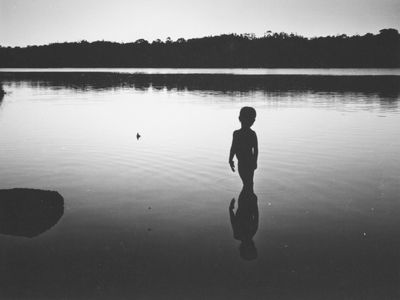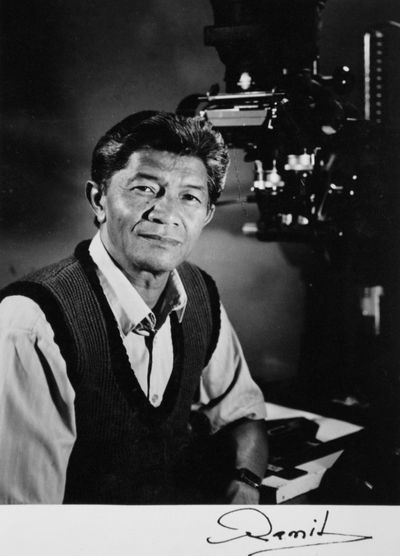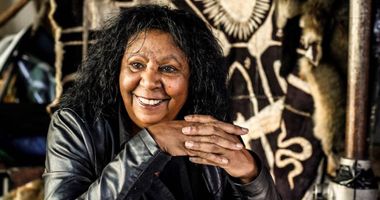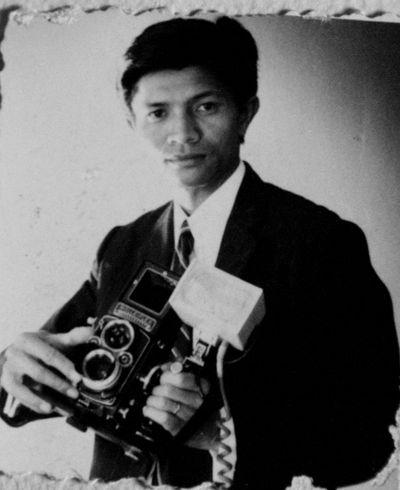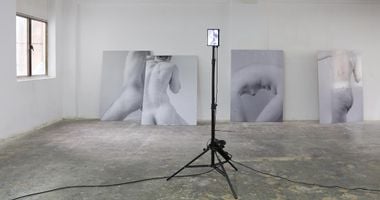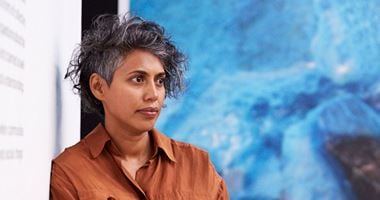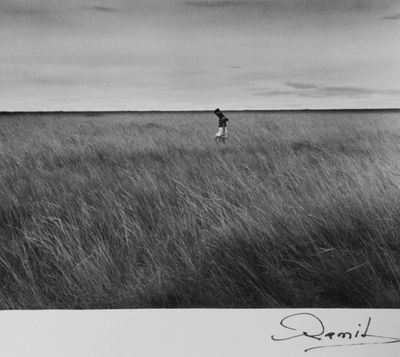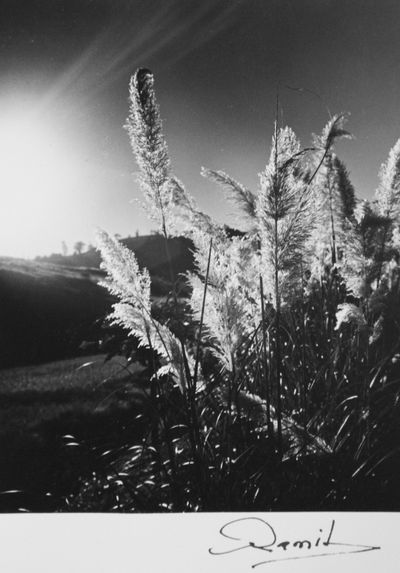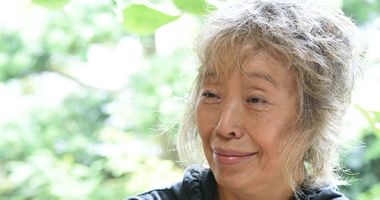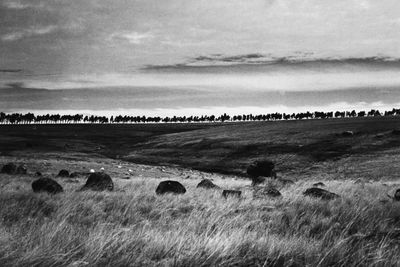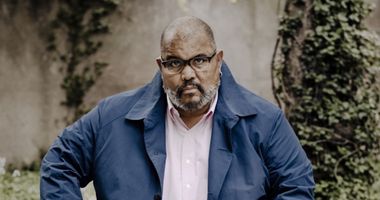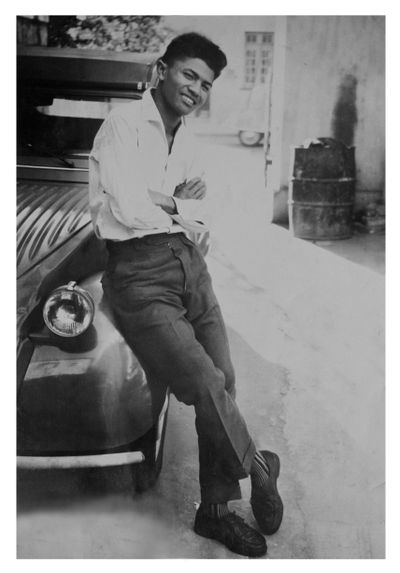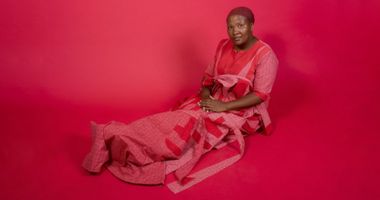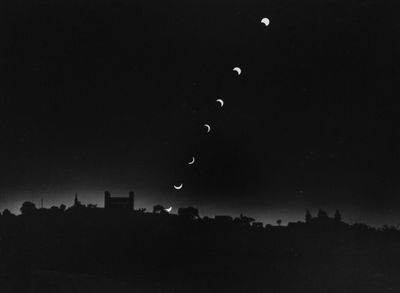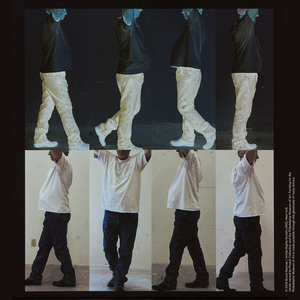Celebrating Ramily's Luminous Photographs of Madagascar
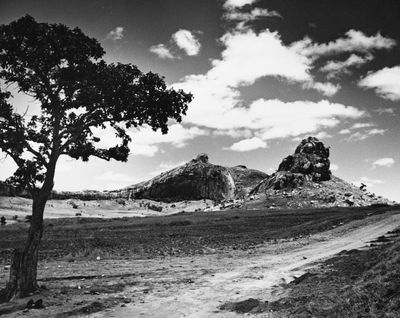
Ramily, untitled (sur la route de Tuléar) (1985). Courtesy Hakanto Contemporary, Madagascar.
The startling photographs of late Malagasy photographer Émile Rakotondrazaka, known as Ramily, reveal Madagascar during a time of great social and political change.
In one crisp, undated black-and-white photograph, La fillette du lac Alaotra, a lone child stands in the middle of a vast body of water. As she looks towards the camera, her reflection shows a slight contrapposto gently resting its weight on one side in the ripple below.
The glistening black-and-white textures of Rakotondrazaka's images appear as if they were shot today. Yet they were taken long ago by the photographer, who lived in Madagascar from 1939 to 2017. His spellbinding images of the island nation, situated in the Indian Ocean, just 400 kilometres from Africa's south-eastern coast, were shot from as early as 1960.
Ramily, who pioneered modern chiaroscuro-on-silver print during the 1970s and is now regarded as the father of Malagasy contemporary black-and-white photography, is being given his first retrospective at Hakanto Contemporary in Antananarivo (30 April–30 July 2022)—the first independent, non-profit, and artist-led space in Madagascar.
'This is an historic exhibition for Ramily's work and Hakanto,' says Malagasy sociologist and cultural mediator Ludonie Velotrasina, who has written several texts on Ramily. Intimate, striking original film works printed on barium paper, marking some of the last silver prints Ramily ever made, reveal 'the period in which Madagascar's independence had begun,' Velotrasina continues.
Titled RAMILY ILAY NANAO NY MARAINA (Ramily: The one who will reveal the day), the show sheds light on Ramily's important, yet little-known practice, showcasing his work as a social commentator, traveller, and artist, whose camera captured an important time of transition in Madagascar.
Ramily's childhood road to becoming a photographer was both difficult and serendipitous. Born into poverty as one of 12 children, he was raised by Pastor Rasolonjatovo from the age of ten, whose son was a photographer. His initial exposure to photography had been with his adoptive brother during 'identity card operations' across Madagascar, as the country was still under colonial rule.
From childhood to his early twenties, Ramily witnessed his country undergo great, and at times violent change in the lead-up to Madagascar's independence in 1960.
He soon developed a passion for taking pictures, and in 1956, aged 17, became an assistant technician at PHOTOFLEX, a studio in Analakely run by French photographer Mesli d'Arloze.
There, he sharpened his darkroom photography techniques before opening his first photo laboratory in 1968, in Ankadifotsy, Antananarivo, inside a basement of a bookstore run by his wife Marie Urbaine Razafindramasy. Two years later, he moved his studio to its present location in Itaosy.
From the 1970s to the 2000s, Ramily exhibited locally, including at the Albert Camus Cultural Centre (currently the French Institute of Madagascar), the CITE (Technical and Economic Information Centre), the Alliance française de Tananarive, and in the streets of the capital with friends.
From childhood to his early twenties, Ramily witnessed his country undergo great, and at times violent change in the lead-up to Madagascar's independence in 1960. Ramily captured this transition with photographs of island dwellers, family members, and politicians, their faces charged with urgency.
Ramily's subjects are often framed amidst the island's enigmatic landscapes. In works like Bessa-Lola, Ihorombe, Ihosy (1973), one lone person walks in a field with their head down while the wind blows over the tops of the wheat.
To reflect the sheer breadth of his work, Ramily's retrospective at Hakanto is divided into five acts. The first examines Ramily's photography in relation to his childhood and family life; the following three touch on his technique and passion, commissions and collaborations, and feature his captivating and expressive photographs of Madagascar; while the final act displays Ramily's re-created studio.
What adds to the extraordinary nature of Ramily's photographs is the fact that the Madagascar of his time had very few places for art and culture.
Ramily's studio's actual location was in Antananarivo, commonly known as Tana; it has been re-created as an installation paying tribute to a place that has inspired many photographers in Madagascar, notably Pierrot Men, among the island's most celebrated living photographers, who had been friends with Ramily, exchanging techniques and exhibiting alongside him.
In the photographer's staged studio, folders with thousands of negatives can be found; glistening silver prints that revive the island's history.
Outside the studio installation, several of Ramily's photographs are shown, notably silent rural landscapes and evocative portraits. One, Arbres brises vent (windswept trees), shot in 1973, captures an idyllic landscape where miles of wheat fields are punctuated by a few lone rocks framed by a row of trees in the distance—their tops appear to sway beneath the sky.
Nearby is a photograph of an anonymous elderly couple dressed in white. Their expressions are solemn and serious.
Ramily's photographs offer beautiful, yet melancholic portrayals of a country and society grappling with freedom, finding in the island's natural landscapes and its people an urgency to define Madagascar's multicultural identity beyond French influence.
What adds to the extraordinary nature of Ramily's photographs is the fact that the Madagascar of his time had very few places for art and culture. After its independence in 1960, the country turned to socialism from 1975 to 1992, during which many art schools and galleries, mostly owned by foreigners, shuttered.
Then, during the 1990s, the country underwent a period of 'Malgasization' to forge a national Malagasy identity; cultural erasure ensued with everything—even language.
As Ramily's rich photography professes and the exhibition shows, there was no limit to what he would shoot. From weddings to presidential elections, including the 1983 Malagasy presidential election, where he took the official portraits of three candidates: Monja Jaona, Richard Andriamanjato, and Manandafy Rakotonirina.
But amid the piercing and probing eyes of his child and adult sitters, some with cigarettes dangling from their lips, what rings strongest from his remarkable portfolio of images are the depictions of Madagascar's natural landscapes.
One print from 2001 captures a solar eclipse in Antananarivo (Éclipse solaire à Antananarivo). To create the image, Ramily took photographs every 10 minutes between 4 and 5 in the afternoon, before superimposing the slivers of the moon to form an eclipse soaring diagonally from the earth to the sky. —[O]
